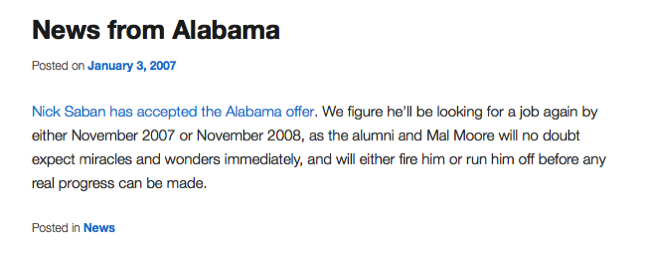When I was a kid, my dad was a veterinarian. In the 1970s, there was no office computerization, so he kept his patient records on yellow cards. As each card filled, he’d add another to the top of the stack, forming a reverse-chronological record of the client’s visits.
(I’ve never seen these size cards anywhere else, but they were cleary a Thing at the time. In my memory, they were each about a third of a sheet of typing paper, but on heavier stock; he also had sturdy steel cabinets to file them in, so it was clearly a standard of some kind.)
Obviously, over time, these card stacks got thicker and thicker — some quickly, because the client had lots of animals; some more slowly, just on the strength of long-lived pets getting their annual attention for years upon years. By the early 80s, when I was working part time there, a few were over an inch thick; these belonged to the families that had sought my father out when he first hung his shingle in 1964, and still used him, many pets later, in the 1980s. Perhaps the fattest belonged to the Slay family.
When my father first opened, he sent my mother out to find an accountant about their age. People didn’t move around as much back then, so the plan was to find one they could keep forever. Mother found Herbie Slay, and as the story goes that same day Mrs. Slay brought their dog to dad for a checkup. In small towns, there’s a lot of that sort of backscratching. (Incidentally, the firm Mr. Slay founded still does my taxes every year; Herbie, sadly, passed away a year or two ago.)
The Slay file was, to my early teen eyes, an artifact from another time. Sure, the top page was from last week or last month, but there at the back were records my father wrote when Johnson was president, when men wore flattops, when Vietnam was in the news every day. Impossibly long ago, I thought. When Dad died, in 1986, I meant to save that file, or at least the first page, but in the rush and chaos and haze of funeral and clinic sale and grief, it didn’t happen, and so now it lives on only in my memory.
I’m nearly 48 now — older than Dad ever got to be — and I know better than to think of 22 years as an eon, though of course it still is.
Today, I took our cats to our veterinarian for their annual shots. They hate it, obviously, and they hate it moreso because even though the clinic is inside the Loop, there’s no good freeway option, so it can be a half hour drive on congested surface streets to get there.
Because of this, every year before now I thought “I should really find a closer vet, since it’s just shots,” and every year before now I quashed that thought out of loyalty. I started using this clinic in 1994, soon after I moved to Houston, and I am not good with change.
Back then, it was just Dr. Alice Frei and maybe one tech in a storefront in Bellaire, around the corner from my first home here, and chosen for proximity as much as anything else. Over time, she grew that clinic, and I didn’t always see Dr. Frei anymore. She’d taken partners, or hired subordinate vets, or something, but that’s what happens, and they were all nice people. At some point, she moved to a nice new building. I was happy for her growth and success, and we always got good care there. Even when our old girl Bob was so sick we had to seek out specialists, they still reached out to us for updates, and sent us a card when the end came.
It’s like that.
But this time around, when we called for our annual appointment — several months late, I must confess — I learned that Dr. Frei wasn’t there anymore, and that she’d sold the practice and moved to Virginia. “Good for her,” I thought. But also: “Well, crap.”
So we went today, and at the end I mentioned that, gosh, if it’s not Dr. Frei anymore, I’m not sure I’m going to keep driving this far, and how would I go about transferring records?
The veterinarian completely understood. Of course they’d send records over to wherever we wanted. “That makes perfect sense; most of our customers are very close, so we totally understand.” I felt awkward about it, but he was very gracious and kind.
We boxed up the cats, and I went out front to pay. As I was paying, though, the vet came back out, smiling. “You know, Mr. Farmer, we have a sequential numbering system for client records here. Each new customer gets the next number.”
Sure. That makes sense.
“The newest record in the system is 7200 something.”
Ok.
“You’re number 35.”
Wow.
I had the sense, 23 years ago, that Dr. Frei’s was a new practice, and I liked that about it. I didn’t realize how new, or how early I was on that August afternoon in 1994. Driving home, I couldn’t help but remember those fat, multi-stapled cards in Dad’s office 30 years ago, and the history they represented. But math will get you; our file at Southside Place reaches back to August of 1994, which is deeper than any file my father ever had. To my everlasting shock and bemusement, we’re the subject of a file just as ancient as the Slay file seemed to me in 1986.
Among the many surprises of middle age are these moments when you find yourself looking at some aspect of life from exactly opposite perspectives, separated by a decade or two.
Life is weird and wonderful. I wouldn’t have it any other way.



